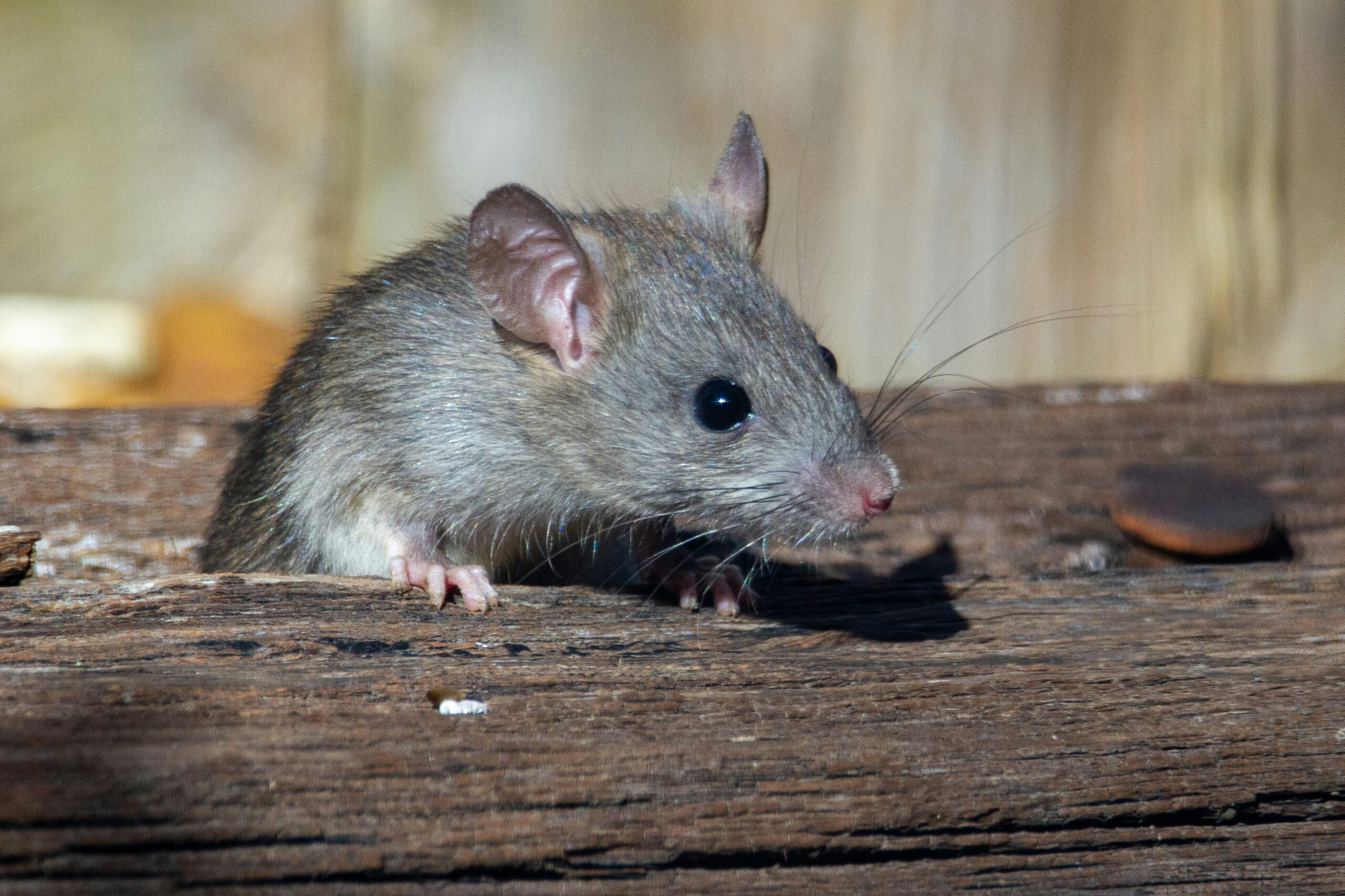HOUSE MOUSE
Your House Mouse Problem, Gone For Good, Guaranteed.
Talk to an Expert
We’ll be in touch to personalize your pest protection plan:

DESCRIPTION:
___
Its tail is as long as its head and body length combined, and the tail is practically hairless. Its fur usually is a medium brown to dusky gray color with a lighter colored belly. The House Mouse can jump straight up about 12 inches, perhaps from the floor to a shelf or drawer pull, and if they jump against a wall, using it as a springboard, they can gain additional height. They can run up almost any vertical surface that is rough, such as wood, brick walls, wire mesh, or cables. The House Mouse can run horizontally along insulated electric wires, small ropes, or the telephone line that comes from the outside pole to the house. The House Mouse can squeeze through openings slightly larger than one quarter of an inch in diameter. They are able to get through any opening that they can get their head through, being able to squeeze the skull and skeleton down a bit to facilitate entry. They can jump down to the floor from a height of 8 feet without being injured, and can jump horizontally, from a standing start, at least 18 inches.
BIOLOGY:
___
A female house mouse can produce six to ten litters in her lifetime, with 5 or 6 mice in each litter. The gestation period is only 21 days, and those offspring are adults that can mate in only six weeks. In a one-year period a House Mouse is capable of excreting 18,000 fecal pellets. That’s 1,500 each month, or around 50 per day per mouse. One excellent detection tool available to the pest management professional is ultraviolet light. Both wet and dry urine deposits of rodents will fluoresce when exposed to UV light, which we also call “black light”. In a darkened environment you may be able to expose the presence of rodent urine on pallets, floors, or packaged products by passing a portable UV light over the area.

HABITS:
___
It has relatively large ears and small feet. Once “home base” is established, the House Mouse may not wander very far from it. The female House Mouse may spend her whole life in an area no more than a ten foot circumference, possibly even within a single bag of grain. The need for water is very limited; the House Mouse generally is able to survive on the moisture that can be found within the foods that it eats, even grains and nuts. The House Mouse has two main periods when it feeds – at dusk and at dawn, in both cases in relative darkness. They can survive in a temperature of 24 degrees Fahrenheit for many generations, as long as food and nesting materials are available.
The sense of hearing in mice is excellent, and if you are moving around in their habitat they certainly will hear you coming and have plenty of time to scamper back to their hiding places. Mice gnaw on things; they commonly chew on electric wires, and are blamed for a high number of structural fires as this activity causes electrical shorts in a home.
